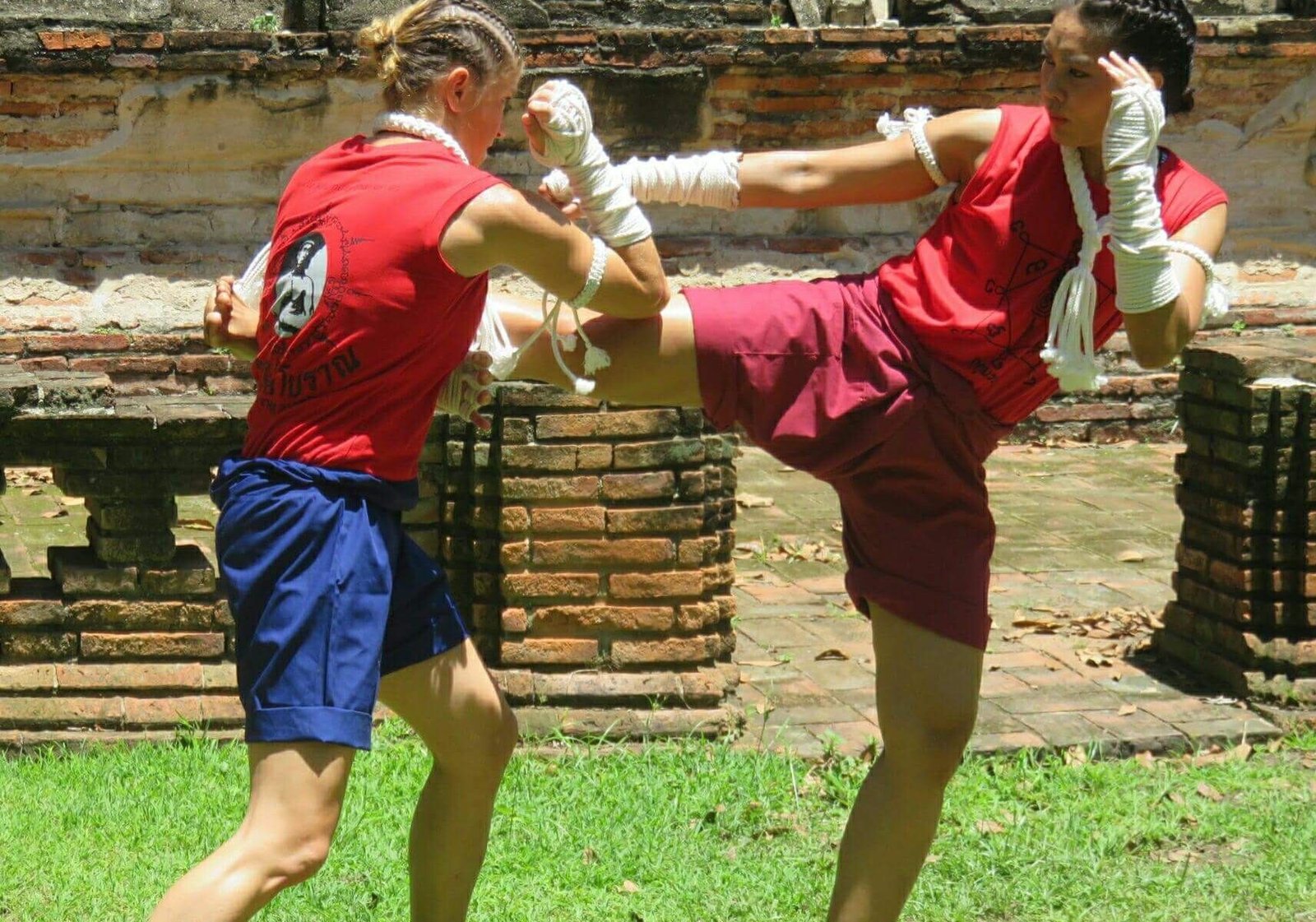Muay Thai, widely known as the “Art of Eight Limbs,” is far more than just a combat sport. It is a cultural treasure deeply rooted in the history of the Kingdom of Siam (modern-day Thailand). This unique blend of tradition, spirituality, and strategy has evolved over centuries to become a globally practiced and celebrated discipline today.
The Origins of Muay Thai: Siam and the Legend of Nai Khanom Tom
The history of Muay Thai is intertwined with the legacy of the Thai people. Originally called Muay Boran (“ancient boxing”), this martial art was used as a form of combat by Siamese warriors in times of war. Its effectiveness on the battlefield and its cultural significance made it a symbol of national pride.
One of the most famous legends associated with Muay Thai is that of Nai Khanom Tom, a warrior captured by the Burmese during the sacking of Ayutthaya in 1767. According to legend, Khanom Tom earned his freedom by defeating multiple Burmese fighters using Muay Boran techniques. His victories not only secured his release but also established Muay Thai’s reputation as an unbeatable art. Today, March 17th is celebrated as National Muay Thai Day in Thailand to honor his legacy.
From Muay Boran to Modern Muay Thai
Over time, Muay Boran evolved into Muay Thai, adapting to a less warlike and more sporting context. In the 20th century, modern rules were introduced, including the use of gloves, a standard boxing ring, and weight classes. These changes made the sport safer and more accessible to international audiences.
Despite these adaptations, Muay Thai has retained many traditional elements from Muay Boran. Rituals like the Wai Kru Ram Muay (a ceremonial dance performed before each fight) and the use of Sarama music during matches emphasize the deep connection between Muay Thai and Thai culture and spirituality.
The Golden Era of Muay Thai
The Golden Era of Muay Thai, generally regarded as the 1980s and 1990s, is considered a pinnacle of technical and competitive excellence. During this time, Muay Thai reached unprecedented levels of popularity in Thailand, and fighters became national icons.
Legends like Dieselnoi Chor Thanasukarn, Samart Payakaroon, and Yodmuangchai Sor Ploenchit showcased incredible skills, blending technique, strategy, and endurance. Matches typically lasted five rounds, with a slow buildup in the first two rounds and an explosive finale in the last three.
Modern Muay Thai: Changes and Transformations
Today, Muay Thai has undergone significant changes, partly to cater to a global audience. In international circuits and promotions like ONE Championship, three-round fights are now common, replacing the traditional five-round structure.
This shift has influenced fighting styles, with modern fighters adopting a faster pace from the start, eliminating the traditional “feeling-out” phase of earlier rounds. Additionally, the emphasis on entertainment has grown, with fighters focusing on powerful strikes and dramatic moments to captivate audiences.
Despite these transformations, Muay Thai remains deeply connected to its roots, balancing technical mastery, mental resilience, and respect for tradition.
Conclusion
Muay Thai is more than a sport; it is an art form that tells the story of a people, a symbol of discipline, and a source of inspiration for those who practice it. From its origins in Muay Boran to the rise of modern Muay Thai, including its Golden Era, this discipline continues to evolve while staying true to its cultural heritage.
Whether you are a martial arts enthusiast or someone seeking a unique and transformative experience, Muay Thai offers a profound connection to self-improvement and a millennia-old culture.

